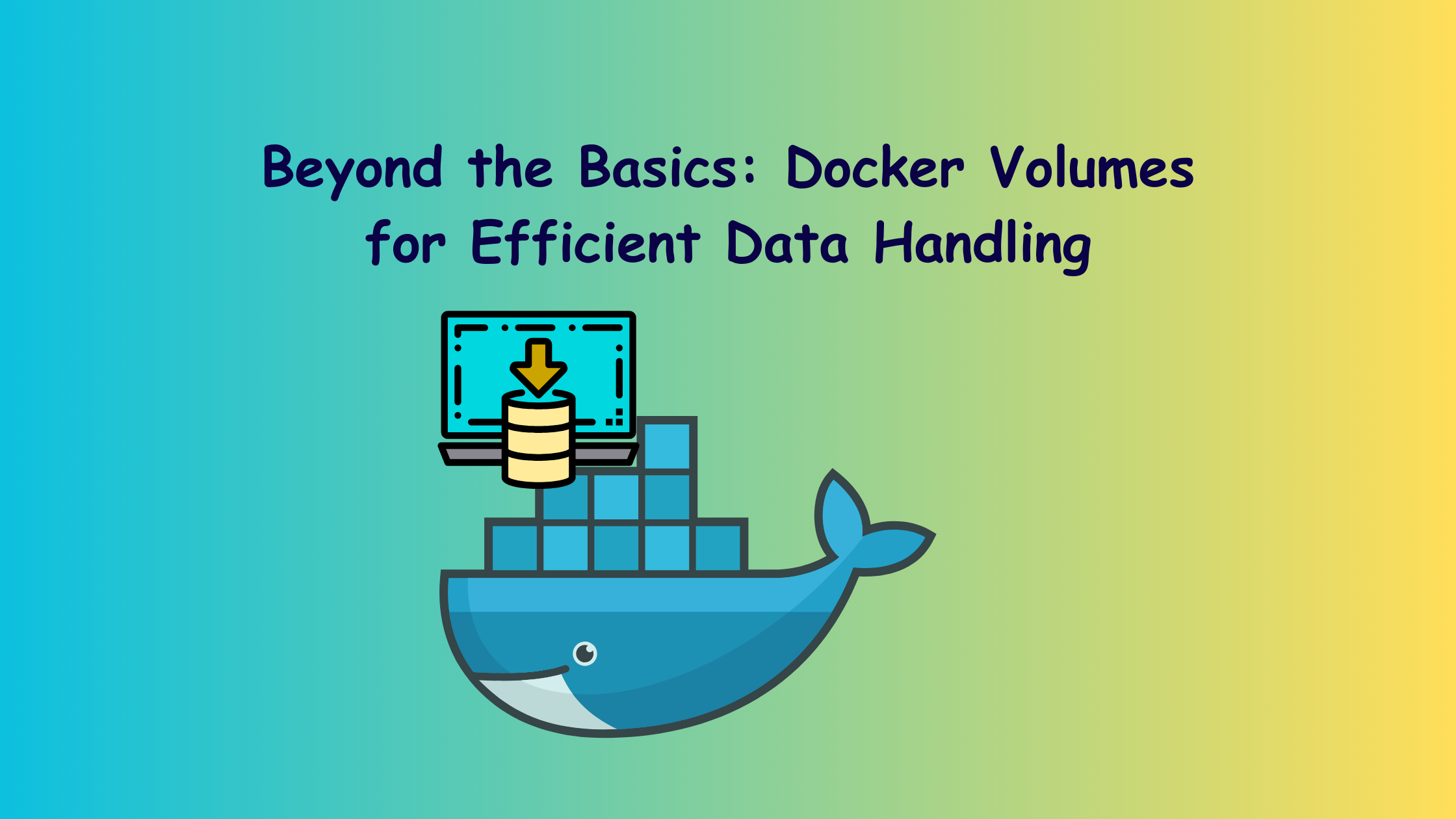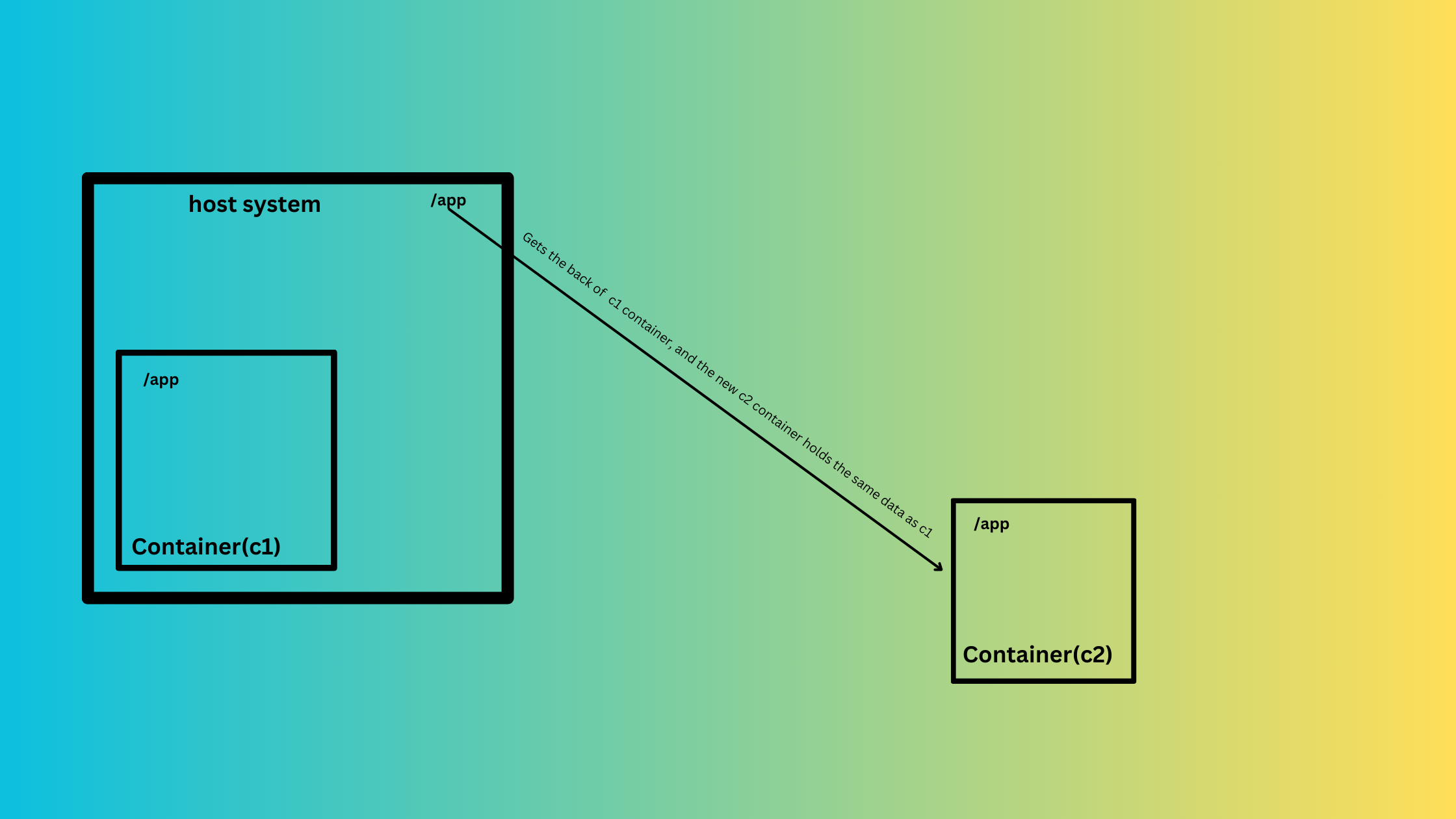Mastering Docker Volumes: A Comprehensive Guide
 Subash Neupane
Subash Neupane
In this blog, we will deep dive into the Docker volume and networking. The necessity of volumes and networks in the Docker and what they offer to the Docker containers.
As we know Docker is a containerization platform that is used to manage the life cycle of the container. And containers are lightweight and the containers are ephemeral means they are short-lived.
Here the problem that arises with containers are:
Containers typically do not automatically store logs of the programs running inside them. For example, if an Nginx server was running in a container and the container went down, any logs containing crucial information, such as credentials, would be lost. This absence of stored logs poses a challenge for auditing, as there is no readily available historical data.
Without the use of volumes, containers lack a backup store for their data. In the absence of attached volumes, retrieving previous data of an application becomes impossible, and the application operates solely on fresh data. This emphasizes the importance of implementing strategies like volumes to ensure data persistence and facilitate recovery when needed.
So to overcome such problems, Docker has introduced the bind mounts and volumes.
- Bind mounts
Bind mounts allow us to bind the directory in the container with the directory in the host. This ensures that the data within that directory is easily accessible both within the container and on the host.
For example, Suppose a container C1 is down/lost and was bind-mounted to /app, if we create a c2 container then the data of the c1 container present in the host i.e /app can be implemented on c2 so that we don't lose the data of c1 container or let's say c1 container itself.
Therefore bind mounts are nothing but the binding of a specific directory on the container to the specific directory on the host.
Volume
The volume also does the same thing as bind mounts do but the volumes offer a better lifecycle. Using the Docker CLI, volumes can be created. Volumes are the logical partition created on the host. Volumes can be attached from one container to another or can attach the same volume to multiple containers. Volumes are created using the commands and are not assigned like a directory in the bind mount system.
To create volume
docker volume create volume_name
To mount the volume
docker -itd --mount source=volume_name, target=/directory image_name
To inspect the docker container
docker inspect container_id
To delete the volume that is attached to the container, we need to stop the container first and then we can delete it.
docker stop container_id
docker rm cont_id
To delete volume
docker delete volume volume_name
Backup in the volume
If the container has attached to the volume and it is destroyed or down, then the new container can be attached to this volume so the previous data is not lost and the container is safely restored.

Some Real-World Examples:
Database Persistence: Attaching a volume to a database container ensures that crucial data persists even if the container is stopped or destroyed. This is essential for maintaining the integrity and continuity of databases in production environments.
Shared Configuration: Teams often use volumes to share configuration files across containers. Imagine a microservices architecture where multiple containers require access to a shared configuration, using a Docker volume makes the process easy by enabling reliable communication between containers without compromising on data consistency.
Log Retention: Logging is critical for troubleshooting and auditing. Docker volumes enable the retention of log data even if the container whose logs are available but are no longer running.
DevOps engineers maximize the benefits of Docker volumes through the following best practices:
Use Named Volumes: Naming volumes allows for better organization and management. It simplifies the identification of volumes and their association with specific containers, promoting a cleaner and more maintainable infrastructure.
Automate Volume Creation: Integrate volume creation into your deployment scripts or orchestration tools. This ensures consistency across environments and reduces the likelihood of human error when managing volumes.
Regular Backups: Regularly backing up data stored in volumes ensures that even in the face of unforeseen circumstances, such as hardware failures or accidental deletions, valuable data can be restored easily.
In conclusion, Docker volumes play an important role in addressing the ephemeral nature of containers and overcoming challenges related to data storage and management.
Happy Learning!!
Subscribe to my newsletter
Read articles from Subash Neupane directly inside your inbox. Subscribe to the newsletter, and don't miss out.
Written by

Subash Neupane
Subash Neupane
Computer Science graduate